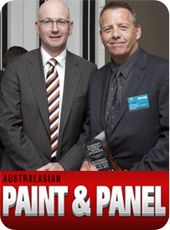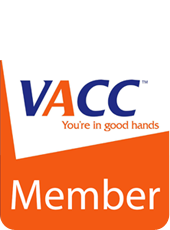The Refinish Process
The Paint Department has huge responsibility because their work is the first thing seen and the easiest to inspect by the customer. The Paint Department covers several processes all combined into one department. Using PPG Envirobase High Performance paint system we refinish vehicles to as close to OEM specification as possible by hand. The painters will use the skill they have learned through training by PPG and continual professional development to achieve the shine of a new car. PPG Envirobase HP is a waterborne paint, reducing the pollutants of solvent based products.
Step 1 - Preparation
Preparation usually starts with preparing any repaired parts, bare areas or components for priming with an appropriate priming product for the material being prepared. Some types of primers can be applied just prior to the final coats of paint reducing the preparation time and increasing efficiency. The primer ensures that the final finishing coats of paint will last a lifetime without deterioration or de-laminating from the base material. Once the primer has dried the painter will use dustless sanding equipment to smooth the surface of any miniscule imperfections. They will continue with similar preparation on all the affected areas, preparing whole panels to avoid the blending of the top coat into existing paint finish. We do this to avoid any potential for paintwork to fail in the blended area which is a common spot for product/application failure. Once sanding and preparation is complete the vehicle is masked, cleaned and readied for the colour and top coats of paint to be applied
Step 2 - Colour Matching
Colour Matching is probably the most critical component of the entire repair process. Without a correctly matched colour the painters are taking off on the wrong foot and undoing the hard work of the previous people with a mismatched colour. The colour must be correctly matched to the vehicle to maintain the OEM finish that we produce. The painter uses several methods to ensure the colour match is spot on. The first and foremost is a system by PPG called 'Spectro'. It is an electronic 'Eye Device' that is placed on the vehicle to gather colour sample readings of the existing paint. These reading are compared against the PPG colour database and the closest match variation is offered to the painter for mixing. The results are graded according to the accuracy of the colour match by 'Spectro' with low readings being unnoticeable close match or 'blendable' and high numbers will require further manual adjustment to the achieve a perfectly matched colour. If further colour adjustment is required the painters prepare the colour and add small amounts of additional colour to 'tweak' the colour for a perfect match. Once the colour has been approved for application the painter will ready their spray painting equipment, clean him/herself of any loose particles and wear a special painting suit with clean air-fed breathing mask.
Step 3 - Colour/Clear spray application
Prior to the colour and top coats of paint being applied the vehicle will have been prepared, cleaned, masked and moved into one of our Low Baked Ovens ready for the application of colour and the protective clear top coat by our skilled spray painters. The spray painting process is critical that it is applied consistently and cleanly. Depending on the type of paint/colour the we are replicating on the vehicle the painter will apply the colour first and then a final top coat of protective clear. The painter will methodically move around the vehicle applying a consistent coverage of colour to all areas that require refinish. The colour is applied with a technique that allows it to blend into the existing colour to further assist the perfect match of the finished colour. Once the colour application is finished he/she will change equipment and using similar techniques apply a top coat of protective clear. As with all aspects of painting, care needs to be given to avoiding any imperfection during the process to avoid further work later on. Finally the painter starts the baking cycle.
Step 4 - Inspect & Denibbing
After the vehicle has completed the baking cycle it exits the Low Bake Oven and is inspected by the painter for any imperfections. We use a custom built lighting tunnel that highlights any spots that require denibbing. Denibbing is the process of removing paint imperfection from the finished surface. It is a process that we strive to eliminate by reducing the possibility in the preparation, but keeping to our quality standards means there might be a few spots to denib. If the vehicle requires debinning the painter will use specially designed equipment to carefully sand out the imperfection and polish to an OEM shine. Deniibbing can make or break a paint finish so we only use high grade equipment and products, and follow carefully designed systems developed by OEM suppliers. Finally a re-inspection in our lighting tunnel and a hand polish adds the deep gloss we all expect from a factory finish.























